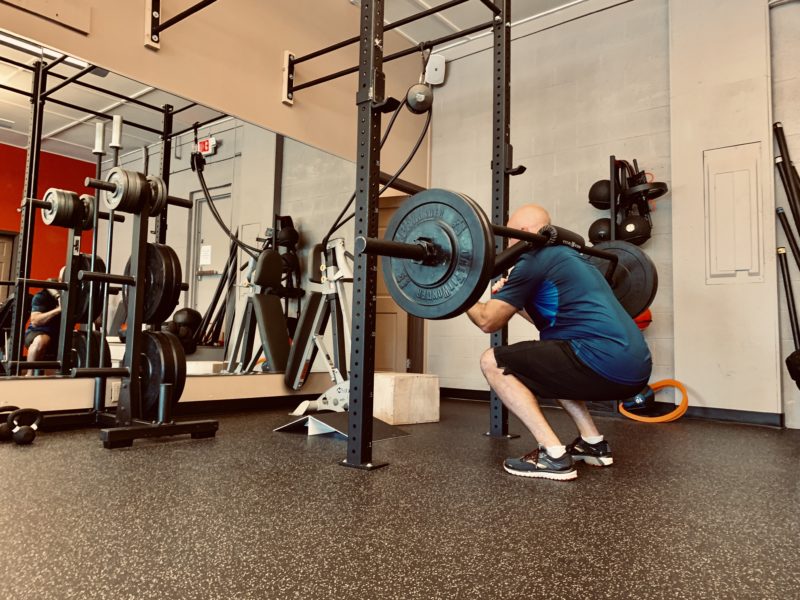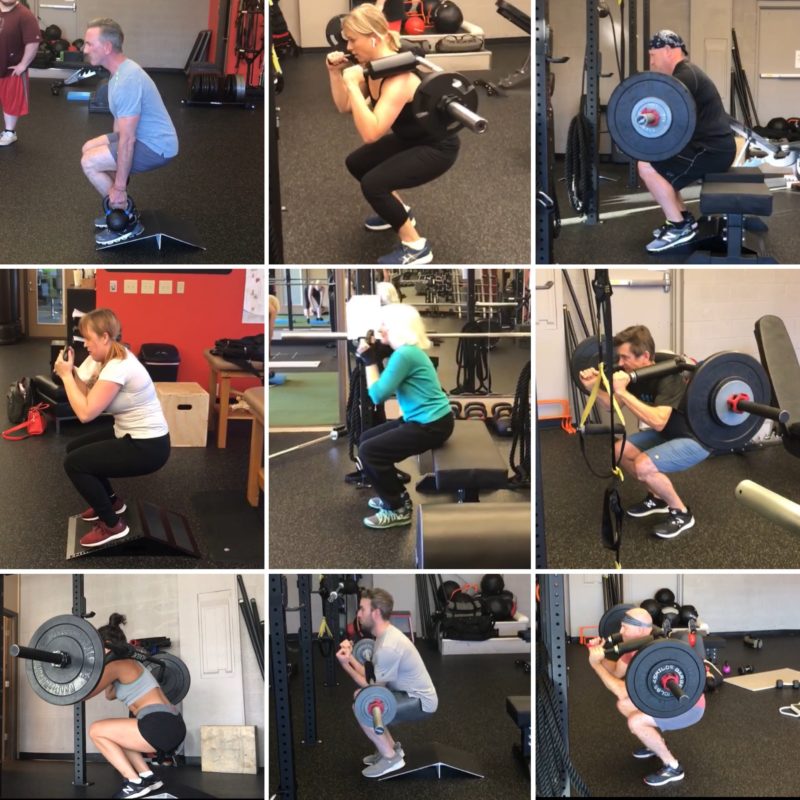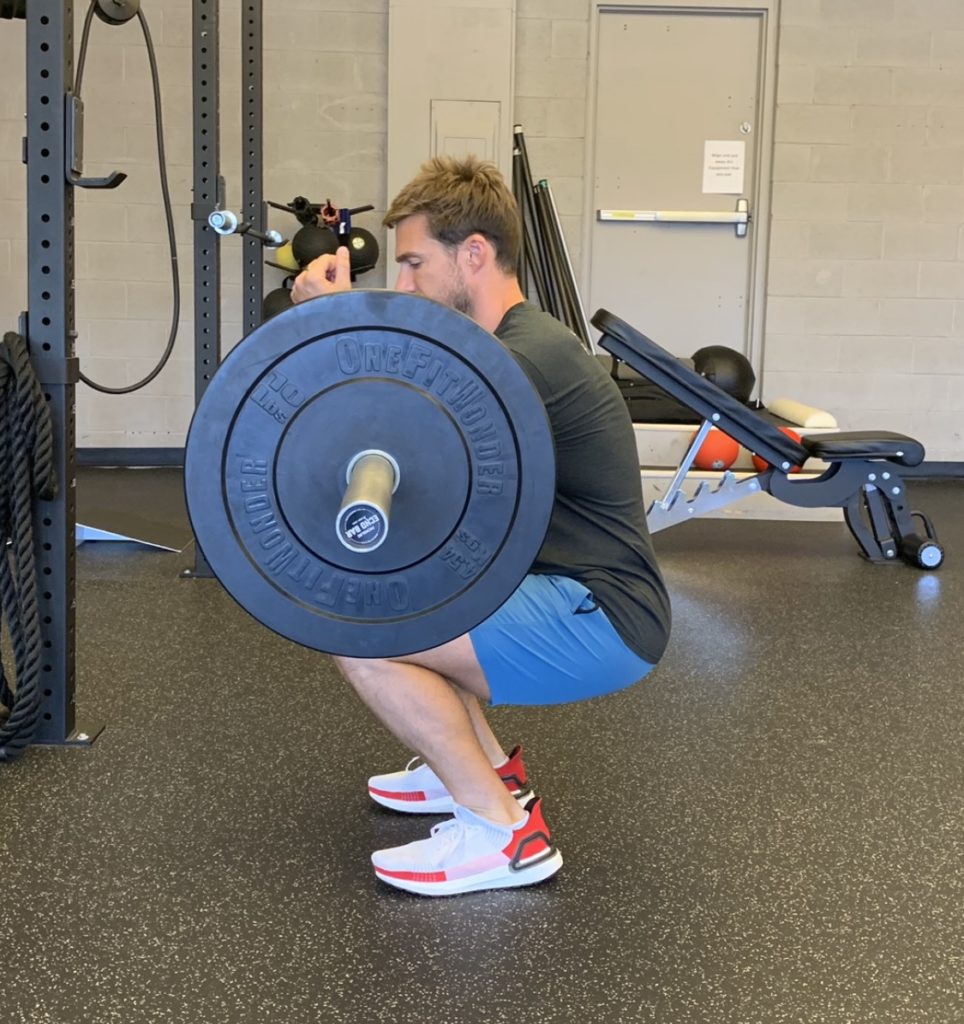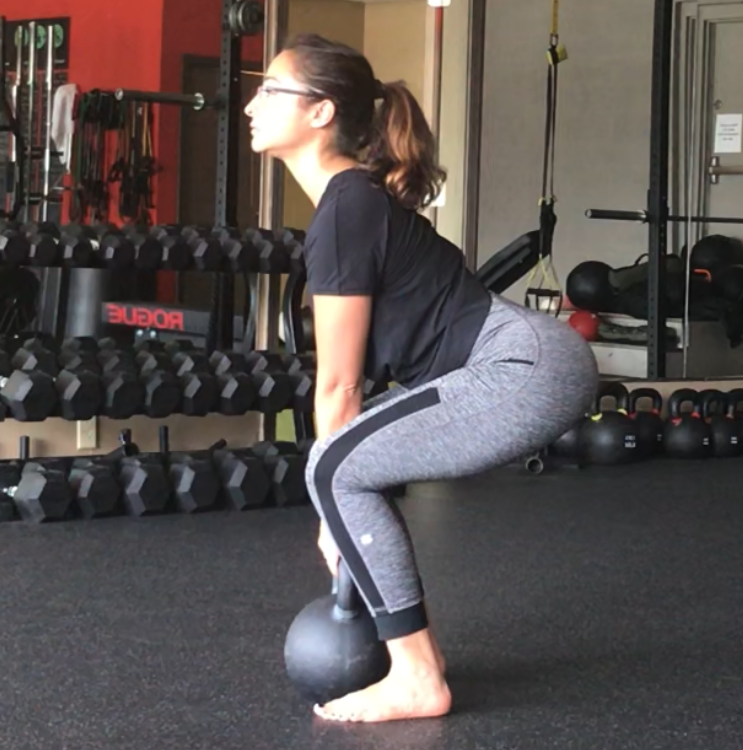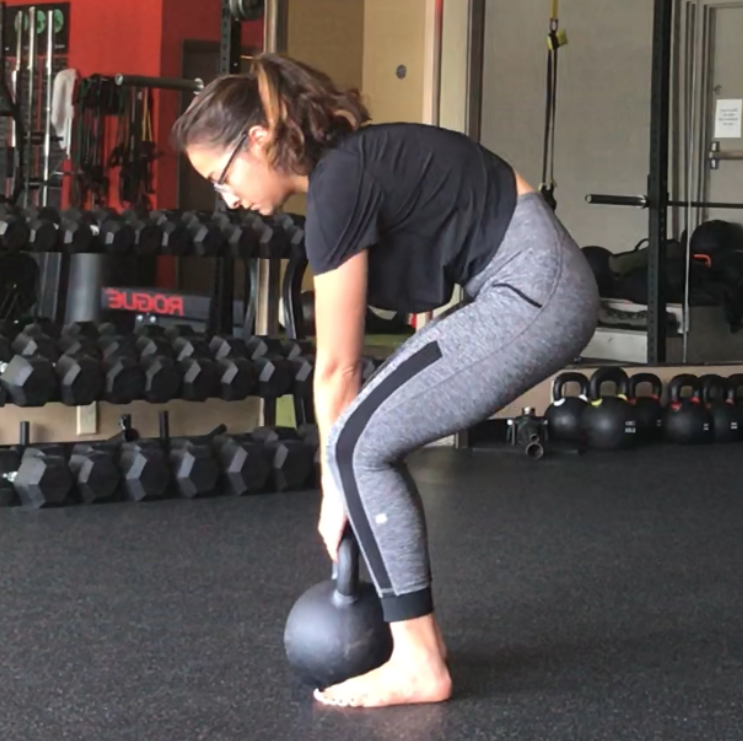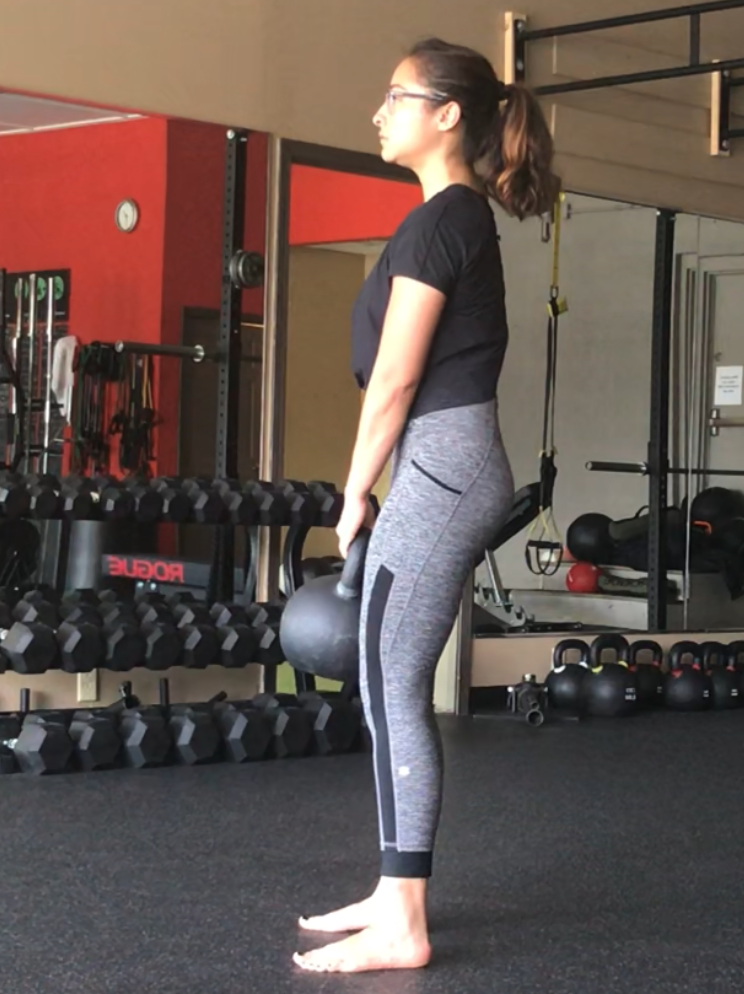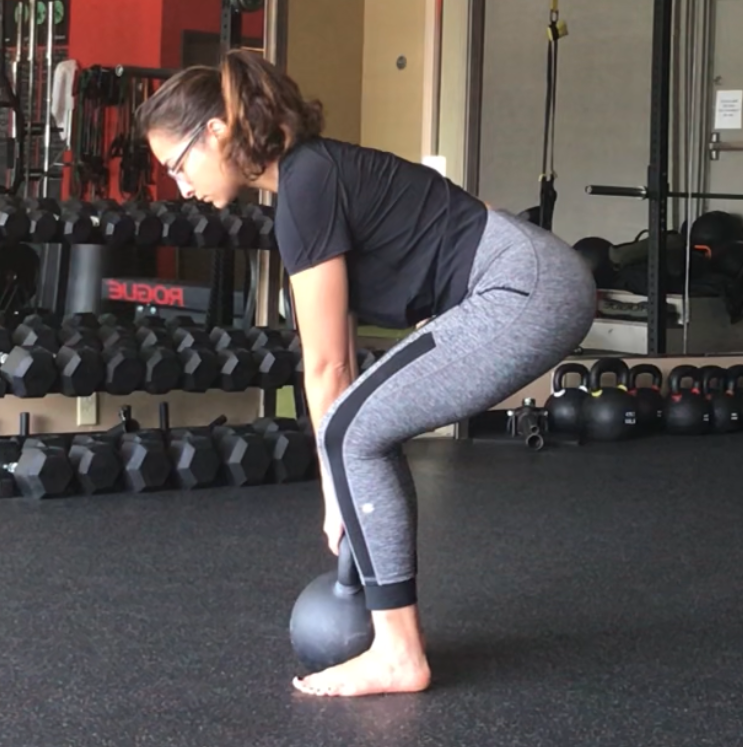Squat Progression Timelines
On Monday I shared with you my current list of squat progressions that we use with our clients at Enhancing Life.
Today I’m going to give you as much context as possible to help you implement these progressions with whoever you work with. I’m going to take you through three different types of clients who we deal with. You’ll see that they all go through the same progression, but the way it’s explained is different and the amount of time they spend with each one will vary.
This is not a template for you to follow. This is for you to get the big picture, understand our principles, and implement these progressions depending on the client you’re working with.
At Enhancing Life, we don’t do any 1-on-1. We have group classes and semi-privates. Which means we always have multiple people at once needing to be coached.
That’s one reason behind the consistency of our progressions and the time spent on each one. The better we can set up our clients by nailing down the technique, the easier it is to progress them, and the more fun they are to program for.
If we did 1-on-1, we would probably progress people faster, and we would probably pick more complicated progressions since ONE client would have all our attention and we could continue to cue them until they got it right.
With multiple people at once, we’ve got less than a minute to show someone a new move and seconds to correct them after showing them.
Before we dive into the timelines. Let’s talk about breathing. The hardest thing to get a client to buy into, right?
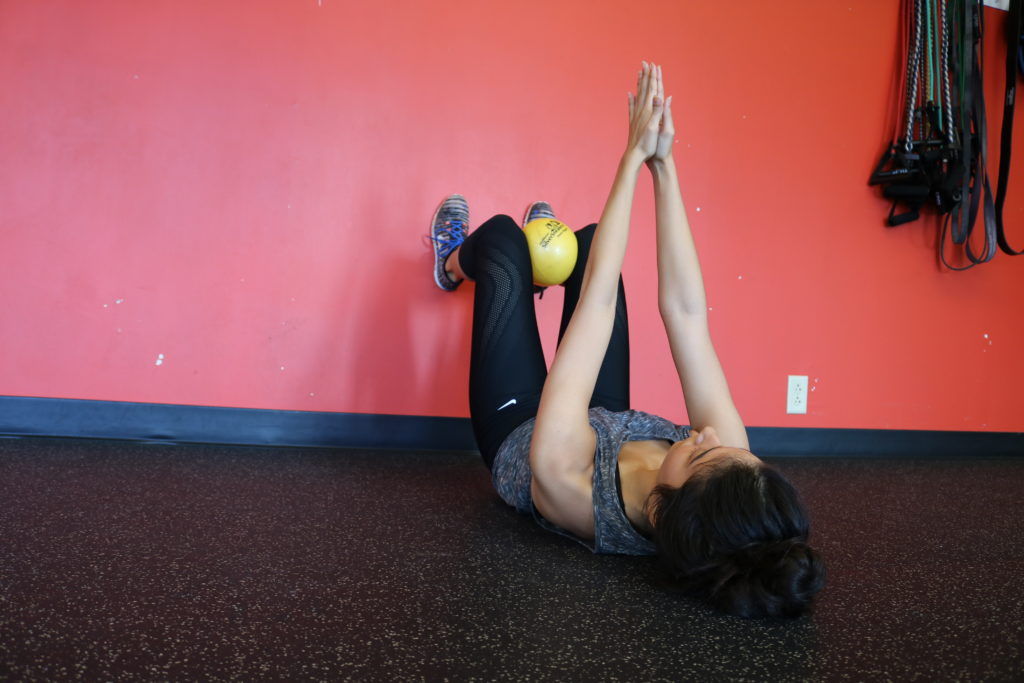
How are you going to convince them for the first two sessions they’re going to do an assisted ISO squat? How are you going to get them to buy into learning the basics without them asking you: “hey, when are we actually going to lift weights?!”
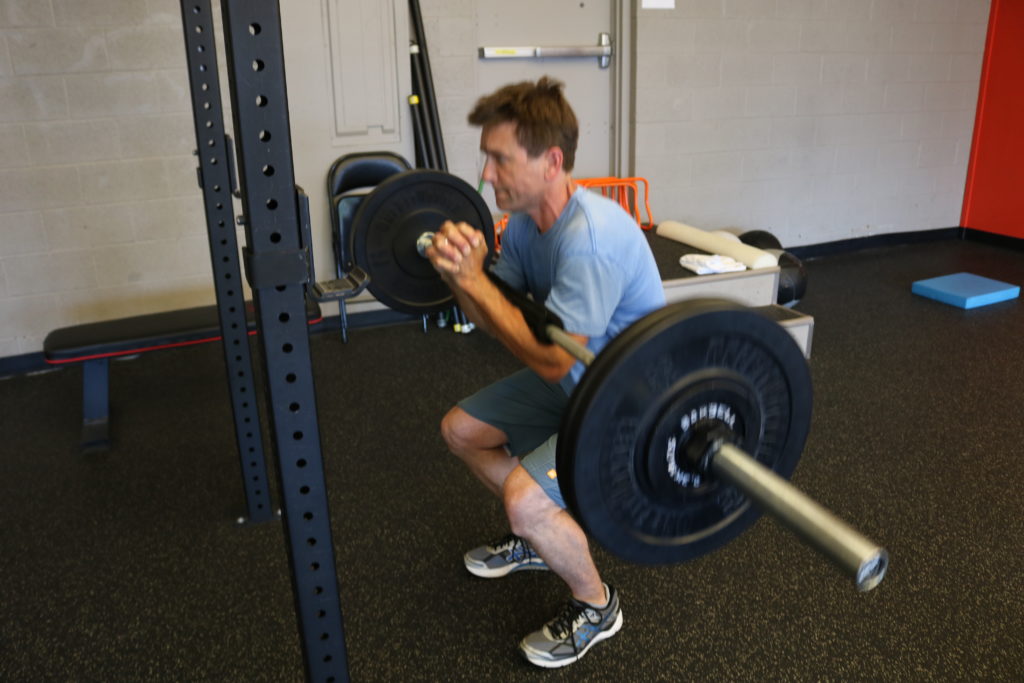
Here’s how:
1) Stop Making Assumptions
Are they really wondering “Hey, when are we actually going to lift weights?”
Are you assuming they don’t want to nail down the technique? Are you assuming they’re wondering when the KBs and barbells are getting pulled out? Are you putting all the pressure on yourself, thinking they’re wanting to be progressed after ONE session?
Just because one client said they didn’t want to learn the basics and “the breathing”, doesn’t mean they all feel that way. Just because the internet is telling you no one cares about function and everyone wants to get after it, doesn’t mean you can’t take a couple of sessions to work on the basics.
So, get rid of the assumptions.
Plus, if you have #2, they’ll definitely not be wondering when the loading is coming.
2) Nail Down the Execution

If your coaching is on point, after an assisted squat, they’ll be saying “Damn that’s hard. My quads are dying. My abs are dying. My glutes are dying”.
If you lack the coaching skills, they’ll feel nothing, and they might actually look at you like you’re wasting their time.
A well-executed 90/90, burns the hammies and abs.
A properly done assisted squat, crushes the legs.
The problem always comes down to a combination of 1) clients don’t take cues well 2) trainer can’t coach the client through new moves.
Just because it’s an exercise on the ground or an assisted activity, it doesn’t mean it’s easy. In fact, even experienced lifters get crushed with these activities.
The recent Bro Research Radio, Ryan, the biggest guy I know, mentioned how he got crushed doing one of the squats in our list of progressions.
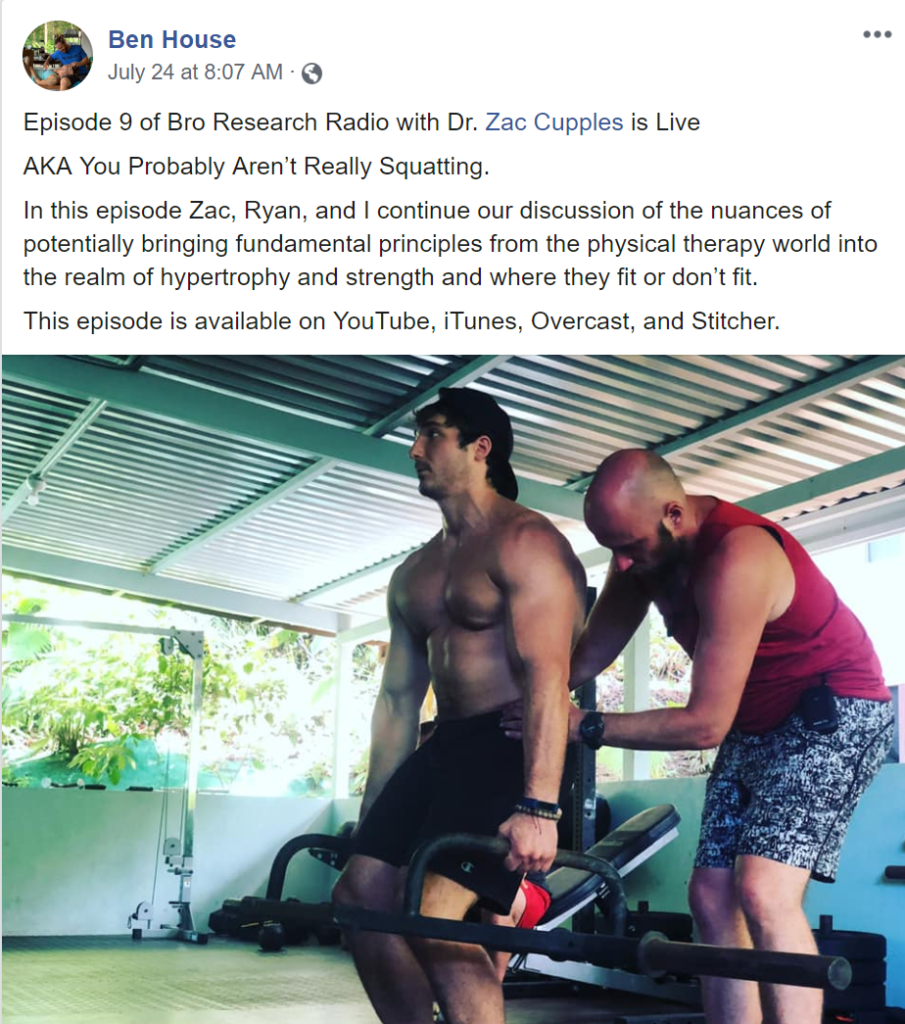
If Ryan is getting smoked doing “low-level stuff”, just wonder how your general pop client who has no experience lifting will feel!
When coaches say they can’t get clients to buy into this type of training, I can’t help but wonder if they’re lacking the coaching skills that get clients to buy into it.
If you think that’s you, September 29th in NY, Michelle Boland and I have a 100% hands on workshop you won’t want to miss out on. Don’t let your coaching skills hold you or your clients back!
3) Describe Your Training as a Skill
With any new skill, you must allow yourself to be a beginner. I will sometimes compare our training to rock climbing. It’s not uncommon to attend your first rock climbing class and spend the whole time working on hand and foot positions.
What sounds better?
“You can’t move well, so you have to work on the basics and learn these breathing exercises. That’s the only way we will allow you to add load to exercises” – Lucy in 2012
Or
“These next two sessions you’re going to take the time to learn our cues, our lingo, optimal lifting technique…because strength training and lifting weights is a skill that requires you to master these basic positions. If you do this, you’re going to be extremely successful progressing through our program” Lucy in 2019
After I say something like the second quote, I will point out to a client lifting heavy weights or maybe show off a PR that is listed on our success board, where I show them their future. I show them the end product.
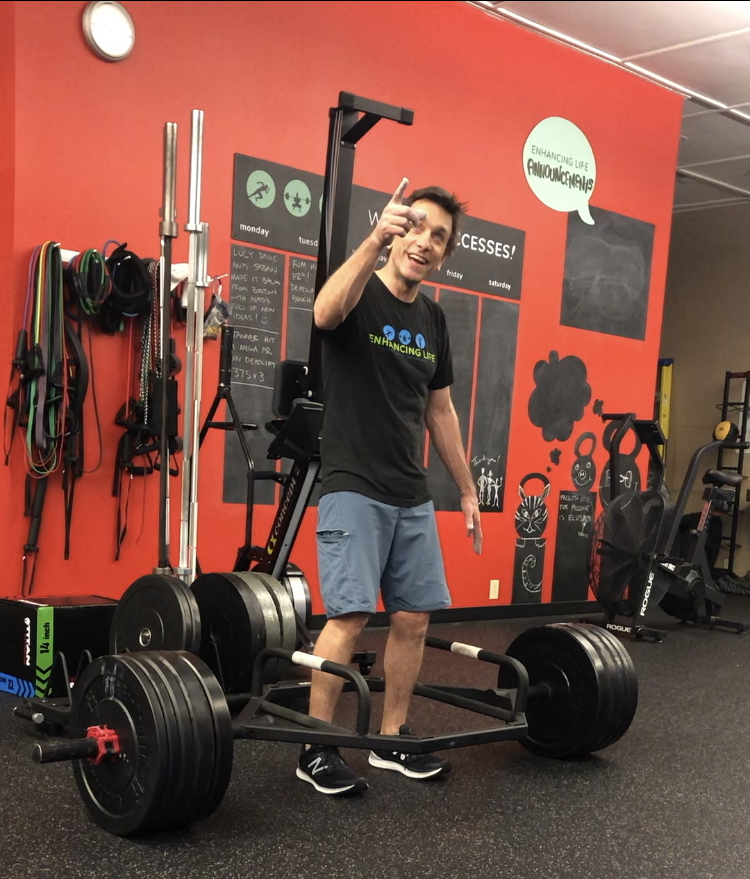
I failed at that in the past which is why I had push-back from clients not wanting to work on the small little details.
Explaining our training as a new skill, allows us to spend a few sessions working on the basics without them thinking they’re stuck working on the technique component to lifting forever.
If you want to get people to buy into the basics:
Stop making assumptions, better your coaching skills, and describe strength training as a service that requires you to learn a new skill.
Now let’s go through the timelines!
Client A:
Your regular general pop client who is fairly active outside of the gym. They’re not scared of the idea of lifting weights and they’re ready to get after it.
With these people, you have to remind them what your end goal for them is:
Lifting Weights
Give the first few exercises purpose by showing them the familiar positions and how those activities are preparing them to what they want to do which is, lift weights.
Show them how this:

And this:
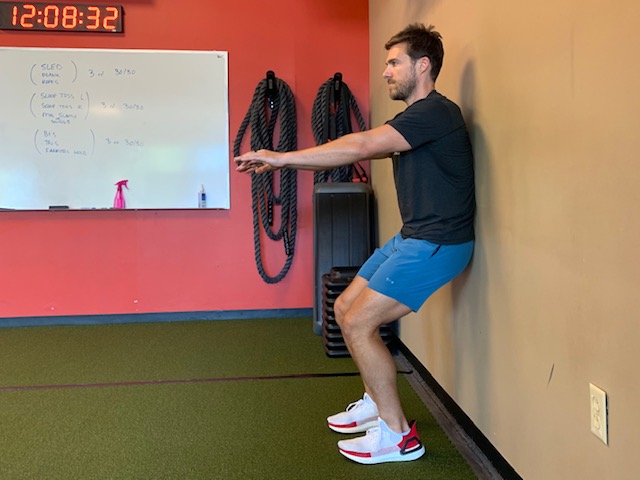
Are the same positions as this:
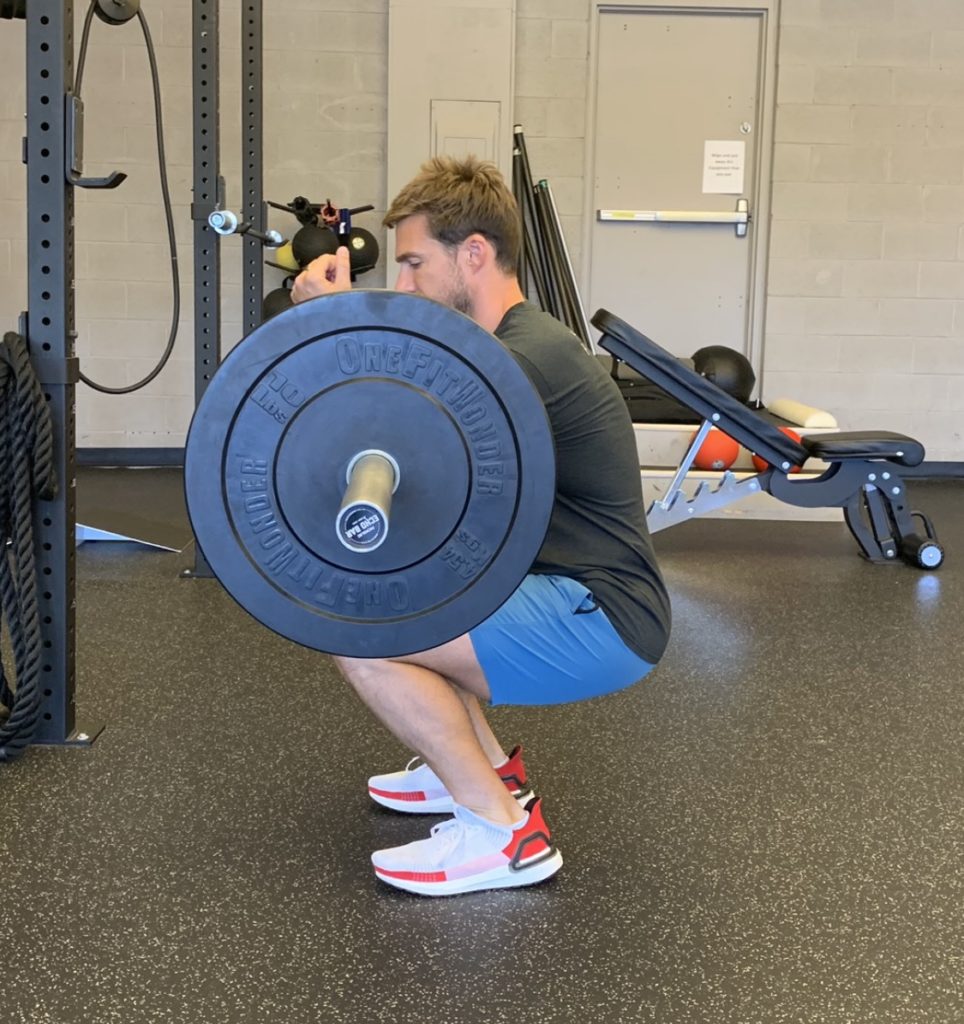
Those visuals alone can give people the understanding of what you’re trying to accomplish and now the ISO squat hold serves a purpose and they know they’re not stuck there forever. They know they’ll get to the loading part soon.
(sidenote: the better your coaching skills, the faster they get to the loading part)
Here’s the timeline:
| Exercise | Timeline: How Long Will a client do this? |
| 90/90 | Introduced During the Orientation/Assessment This activity is added to their warm-up |
| Rockback | Introduced During the Orientation/Assessment This activity is added to their warm-up |
| Assisted ISO Hold | 1-3 sessions This exercise will be in their strength training part of their program. A client will usually do 3-4 sets of 5 breaths. Usually paired with some type of upper body lift and/or “core exercise”. |
| Assisted Squat | 1-3 sessions Once this activity takes the place of the ISO hold. Another or the same variation of the ISO squat will become part of the warm-up, and they will start adding movement to the strength training component of their program. The client’s program will usually stay the same, but the squat will just be progressed/modified on the sheet. The sets and reps are around 3×8-12 If they need the extra challenge but still struggle with keeping the right position, slow down the tempo to give them the burn. |
| Loading Squat | 4-8 weeks Once load is introduced that is usually when we decide to write the new client a new program, and pick the first loading variation (goblet) and have them do it for 4-8 weeks. |
This means in 2-6 sessions; you could have someone squatting with load where the cuing needed is to a minimum! Like I said earlier, this isn’t a template to follow to a T. I just want you to get the big picture. Sometimes I’ve introduced movement to an ISO squat, and after one set I give them a KB and progress them to a goblet squat the same day.
Client B
Deconditioned client (perhaps in persistent pain) who is not very active outside of the gym. They’re scared of the gym and not really wanting to lift weights.
You know how with Client A you had to show them how the breathing exercises are the same as the lifting exercises.
You need to do the same with these people, but the words now have to change. You’re now using the breathing exercises to get them to feel safe with the loading exercises.
Keep in mind, they don’t seem themselves as capable of loading their body.
So with them, show them if they CAN do this without pain or flaring up:
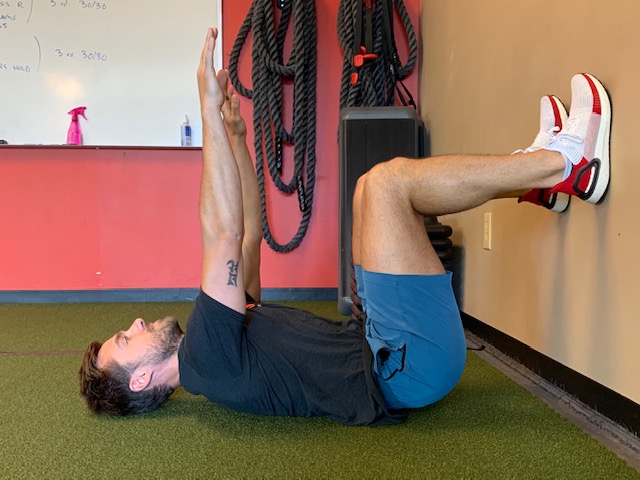
And this:
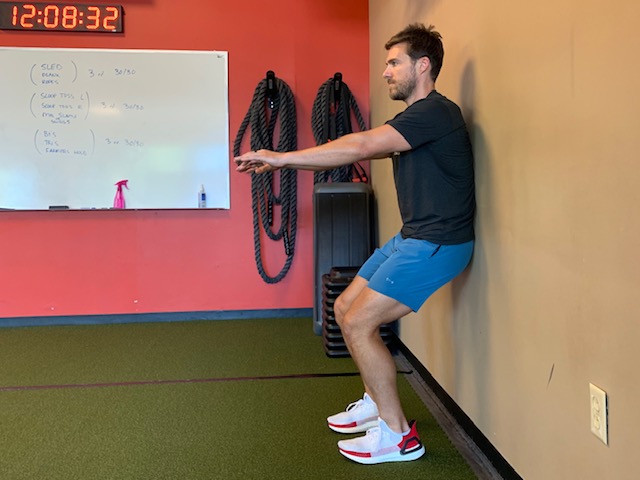
They will for sure be able to do this because it’s all the same:

Consistency is key with these people, and if you can show them those visuals, they’ll feel way safer progressing when you ask them to hold a weight ?
Here’s the timeline:
| Exercise | Timeline: How Long Will a client do this? |
| 90/90 | Introduced During the Orientation/Assessment This activity is added to their warm-up |
| Rockback | Introduced During the Orientation/Assessment This activity is added to their warm-up |
| Assisted ISO Hold | 4-6 sessions This exercise will be in their strength training part of their program. A client will usually do 3-4 sets of 5 breaths. Usually paired with some type of upper body lift and/or “core exercise”. |
| Assisted Squat | 4-6 sessions Once this activity takes the place of the ISO hold. Another or the same variation of the ISO squat will become part of the warm-up, and they will start adding movement to the strength training component of their program. The client’s program will usually stay the same, but the squat will just be progressed/modified on the sheet. The sets and reps are around 3×8-12 |
| Loading Squat | 8-16 weeks Once load is introduced that is usually when we decide to write the new client a new program, and pick the first loading variation (goblet) and have them do it for 4-8 weeks. |
It’s alllll the same, but you’ll notice the pace is a little slower. The big reason for that is because you’re trying to build safety around these positions and slowly conditioning their tissues. To you it might seem like they’re not doing much, but know that their tissue tolerance is WAY lower than a regular person. An ISO squat IS loading their tissues, so by progressing them a little slower than Client A, you’re meeting this kind of client where they’re at 🙂
Client C:
These people are JUST like client B but they’re not able to progress due to outside factors you’re not able to control or address right away.
That could be a therapist they’re seeing who promotes fear avoidance and fragility, their inability to trust your process, or ingrained maladaptive beliefs.
(I’ll be talking more about these people over the next three weeks!)
But they still must train, so what do you do?
Same as client B…try to use the breathing to get them to buy into the lifting but know that instead of progressing through the list I shared, you’ll have to add a few other squats variations before you start to progressively load.
That will help them feel the same positions in a different context and provide a little bit a novelty since they’re super restricted on what they can do.
| Exercise | Timeline: How Long Will a client do this? |
| 90/90 | Introduced During the Orientation/Assessment This activity is added to their warm-up |
| Rockback | Introduced During the Orientation/Assessment This activity is added to their warm-up |
| Assisted ISO Hold | 4-6 sessions This exercise will be in their strength training part of their program. A client will usually do 3-4 sets of 5 breaths. Usually paired with some type of upper body lift and/or “core exercise”. |
| Wall Squat ISO Hold | 4-6 sessions This exercise will be in their strength training part of their program. A client will usually do 3-4 sets of 5 breaths. Usually paired with some type of upper body lift and/or “core exercise”. |
| Assisted Squat | 4-6 sessions Once this activity takes the place of the ISO hold. Another or the same variation of the ISO squat will become part of the warm-up, and they will start adding movement to the strength training component of their program. The client’s program will usually stay the same, but the squat will just be progressed/modified on the sheet. The sets and reps are around 3×8-12 |
| Roller Squat | 4-6 sessions Different context than the assisted squat but still unloaded. The sets and reps are around 3×8-12 |
| Loading Squat | By now, hopefully, you’ve gained enough trust to progress this client through loaded variations. |
With this person, it might take 2-3 months before they’re progressively loading their squat. I know to you, as a fitness professional, that might sound crazy slow, but you have to put yourself in their shoes.
The deconditioned population in persistent pain who can’t seem to be able to do ANYTHING are the most misunderstood and underserved people in the industry. That’s why, over the next few weeks, I’ll be talking a lot about them and I hope you tune in because if you work with the regular general population, you can definitely work with these people too.
I hope this gives you an idea of how we progress people through squatting. Especially if you train multiple people at once and you want to keep the coaching quality as high as possible 🙂
Until next time
Lucy
